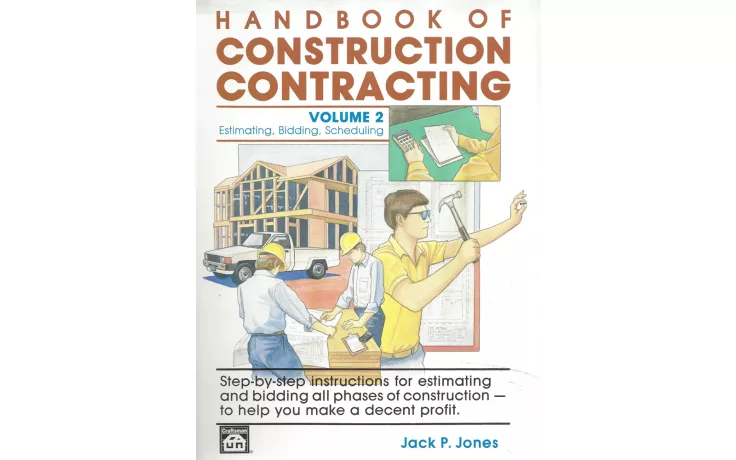Concrete Proof
When the Homeowner’s Association (HOA) of North County in San Diego, Calif., needed to replace their 12:12, 47,000-square-foot wood shake roof, the residents of the 14-unit complex in Carlsbad had some pretty specific criteria for what that roof would be.
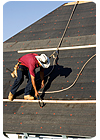
By The Tile Roofing Institute
When the Homeowner’s Association (HOA) of North County in San Diego, Calif., needed to replace their 12:12, 47,000-square-foot wood shake roof, the residents of the 14-unit complex in Carlsbad had some pretty specific criteria for what that roof would be.
“What got us started on looking for a new roof was the fact that our insurance rates were sky high,” said Ron Evans, the HOA secretary, former chairmen of Portland Cement Association and a retired engineer. “We started shopping around but could not find one insurance agency to insure the complex. When we’d tell them we had a wood roof - it was pretty much the end of the conversation.”
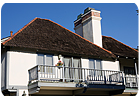 For
Starters
For
Starters
The current roof was in the 24th year of a 25-year book life, according to Evans, so the time was right.
“What really got us going was that about a year ago there was a series of serious fires in the area, and although the fires started from quite a ways off it was blown east by the Santa Ana winds in our direction,” Evans said. “The fact that so many homes were going up in flames made many or our owners nervous.”
Natural disasters like those prompted Evans and his board of directors to consider concrete tile. Among its many benefits, including energy efficiency, lifetime warranty and aesthetics, concrete tile’s fireproofing benefits were a key to helping Evans obtain the most competitive insurance quotes.
“We wanted to find a roof that looked similar to the variegated wood shake roof that was already there,” Evans said. “We looked around and found that the MonierLifetile (MLT) Madera product looked as close to wood shake as anything else that is out there.”
After an exhaustive and diligent six-month search interviewing six different roofing contractors, Evans and his fellow owners ultimately hired Patriot Roofing Inc. of Carlsbad, Calif., to install the new energy efficient elevated batten roof system.
Patriot’s relationship with MLT and the Tile Roofing Institute (TRI), along with the contractor’s experience of installing tile roof systems led them to choose the Madera tile in the Autumnwood color.
Evans said the decision to go with Patriot Roofing was due in part to the company’s affiliation with the Tile Roofing Institute (Patriot Roofing President Dave Mann currently serves as the chair of the TRI Training Committee and is a member of the association’s board of directors).
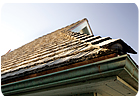 In
addition, all of Patriot Roofing’s installers are certified by TRI, having
attended and completed the Association’s one-day Certified Installer
Program.
In
addition, all of Patriot Roofing’s installers are certified by TRI, having
attended and completed the Association’s one-day Certified Installer
Program.
“We specified an energy-efficient Madera tile roof on elevated battens for a superior above sheathing ventilation (ASV) system along with all copper flashings, considering the project is located on the sand,” Mann said. “The Madera product came as close to matching the existing color and texture of the original roof and - along with a lifetime warranty and the most efficient roof installation achievable, that made the decision pretty much easier for the HOA to approve.”
Roof Design
With help from MLT’s technical department, Mann and his team were able to design a roof system that provided natural airspace created below the tile and above sheathing ventilation, which offered and energy-efficient roof without the need for expensive insulation.
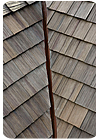 The
natural venting of air created by the sloped roof and the airspace provided a
natural barrier to the heat transfer from above. The additional thermal mass of
the concrete tile added even a greater reduction in heat transfer compared to
the original wood shake system. Additionally, all of the ridges were opened for
attic ventilation at the peaks of the roofs in addition to the code-required
O’Hagin vents.
The
natural venting of air created by the sloped roof and the airspace provided a
natural barrier to the heat transfer from above. The additional thermal mass of
the concrete tile added even a greater reduction in heat transfer compared to
the original wood shake system. Additionally, all of the ridges were opened for
attic ventilation at the peaks of the roofs in addition to the code-required
O’Hagin vents.
“Everyone liked the idea that the roof offered energy-efficient capabilities for not that much more money,” Evans said. “Upon completion, our owner’s rep checked out each attic and commented how much cooler the air temperature in the attic was.”
MLT Technical Service Manager Jerry Vandewater said. “While MonierLifetile designed the Madera series specifically as a wood shake replacement product, it was encouraging to see the customer recognizing the value of the total roof system approach.”
He added. “As public awareness about the importance of our environment, energy savings and long term sustainability increase, we are seeing our customers look beyond simple appearances and focus on the overall value proposition of a properly installed tile roof system.”
The project did have its challenges due to the steepness of the roof, which ranged anywhere from 8:12 to mostly 12:12. This meant that all of the roofers on the job required safety harnesses that were tied off at the ridges.
The crew also replaced the original porous flashing - which had been badly damaged due to the moist salt air - with all new copper flashings to cover and protect all of the exposed areas.
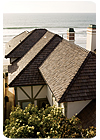 Energy
Efficient
Energy
Efficient
MLT Technical Representative Scott Parmenter said as a manufacturer they were excited that the HOA selected one of its energy-efficient systems.
“In addition to capturing the authentic cedar shake look they wanted, this system can save them up to 22 percent of their cooling costs by reducing the heat in their attic space,” Parmenter said.
Evans, meanwhile, said the company found the TRI and the Association’s Moderate Climate Guide to be “an excellent resource to help us create the scope of work.”
“In some cases we were able to lift the specs we needed verbatim rather than have to create them from scratch,” Evans said. “The guide was integral to helping us design a structurally sound roof that was completely in accordance with all of our local codes.”
The Tile Roofing Institute (TRI) is a nonprofit trade and membership association open to those involved in the production, distribution and installation of clay and concrete tile roof systems. TRI has provided technical expertise to roofing professionals and other building industry constituents since 1971. For more information, visit www.tileroofing.org.

An
installer from Patriot Roofing Inc. of Carlsbad,
Calif. prepares a roof for a
concrete tile makeover.
By The Tile Roofing Institute
When the Homeowner’s Association (HOA) of North County in San Diego, Calif., needed to replace their 12:12, 47,000-square-foot wood shake roof, the residents of the 14-unit complex in Carlsbad had some pretty specific criteria for what that roof would be.
“What got us started on looking for a new roof was the fact that our insurance rates were sky high,” said Ron Evans, the HOA secretary, former chairmen of Portland Cement Association and a retired engineer. “We started shopping around but could not find one insurance agency to insure the complex. When we’d tell them we had a wood roof - it was pretty much the end of the conversation.”

The
Homeowner’s Association of North County in San Diego, Calif.,
replaced the 47,000-square-foot wood shake roof (shown above) on their complex
with concrete tile.
The current roof was in the 24th year of a 25-year book life, according to Evans, so the time was right.
“What really got us going was that about a year ago there was a series of serious fires in the area, and although the fires started from quite a ways off it was blown east by the Santa Ana winds in our direction,” Evans said. “The fact that so many homes were going up in flames made many or our owners nervous.”
Natural disasters like those prompted Evans and his board of directors to consider concrete tile. Among its many benefits, including energy efficiency, lifetime warranty and aesthetics, concrete tile’s fireproofing benefits were a key to helping Evans obtain the most competitive insurance quotes.
“We wanted to find a roof that looked similar to the variegated wood shake roof that was already there,” Evans said. “We looked around and found that the MonierLifetile (MLT) Madera product looked as close to wood shake as anything else that is out there.”
After an exhaustive and diligent six-month search interviewing six different roofing contractors, Evans and his fellow owners ultimately hired Patriot Roofing Inc. of Carlsbad, Calif., to install the new energy efficient elevated batten roof system.
Patriot’s relationship with MLT and the Tile Roofing Institute (TRI), along with the contractor’s experience of installing tile roof systems led them to choose the Madera tile in the Autumnwood color.
Evans said the decision to go with Patriot Roofing was due in part to the company’s affiliation with the Tile Roofing Institute (Patriot Roofing President Dave Mann currently serves as the chair of the TRI Training Committee and is a member of the association’s board of directors).

Patriot Roofing Inc. of Carlsbad,
Calif., installed a MonierLifetile (MLT) Madera concrete tile roof
system to replace the old roof.
“We specified an energy-efficient Madera tile roof on elevated battens for a superior above sheathing ventilation (ASV) system along with all copper flashings, considering the project is located on the sand,” Mann said. “The Madera product came as close to matching the existing color and texture of the original roof and - along with a lifetime warranty and the most efficient roof installation achievable, that made the decision pretty much easier for the HOA to approve.”
Roof Design
With help from MLT’s technical department, Mann and his team were able to design a roof system that provided natural airspace created below the tile and above sheathing ventilation, which offered and energy-efficient roof without the need for expensive insulation.

This is a close-up of the concrete tile roof
that was installed by Patriot Roofing Inc. of Carlsbad, Calif.
“Everyone liked the idea that the roof offered energy-efficient capabilities for not that much more money,” Evans said. “Upon completion, our owner’s rep checked out each attic and commented how much cooler the air temperature in the attic was.”
MLT Technical Service Manager Jerry Vandewater said. “While MonierLifetile designed the Madera series specifically as a wood shake replacement product, it was encouraging to see the customer recognizing the value of the total roof system approach.”
He added. “As public awareness about the importance of our environment, energy savings and long term sustainability increase, we are seeing our customers look beyond simple appearances and focus on the overall value proposition of a properly installed tile roof system.”
The project did have its challenges due to the steepness of the roof, which ranged anywhere from 8:12 to mostly 12:12. This meant that all of the roofers on the job required safety harnesses that were tied off at the ridges.
The crew also replaced the original porous flashing - which had been badly damaged due to the moist salt air - with all new copper flashings to cover and protect all of the exposed areas.

This
is a shot of the completed MonierLifetile Madera concrete tile roof system.
MLT Technical Representative Scott Parmenter said as a manufacturer they were excited that the HOA selected one of its energy-efficient systems.
“In addition to capturing the authentic cedar shake look they wanted, this system can save them up to 22 percent of their cooling costs by reducing the heat in their attic space,” Parmenter said.
Evans, meanwhile, said the company found the TRI and the Association’s Moderate Climate Guide to be “an excellent resource to help us create the scope of work.”
“In some cases we were able to lift the specs we needed verbatim rather than have to create them from scratch,” Evans said. “The guide was integral to helping us design a structurally sound roof that was completely in accordance with all of our local codes.”
The Tile Roofing Institute (TRI) is a nonprofit trade and membership association open to those involved in the production, distribution and installation of clay and concrete tile roof systems. TRI has provided technical expertise to roofing professionals and other building industry constituents since 1971. For more information, visit www.tileroofing.org.
Looking for a reprint of this article?
From high-res PDFs to custom plaques, order your copy today!





